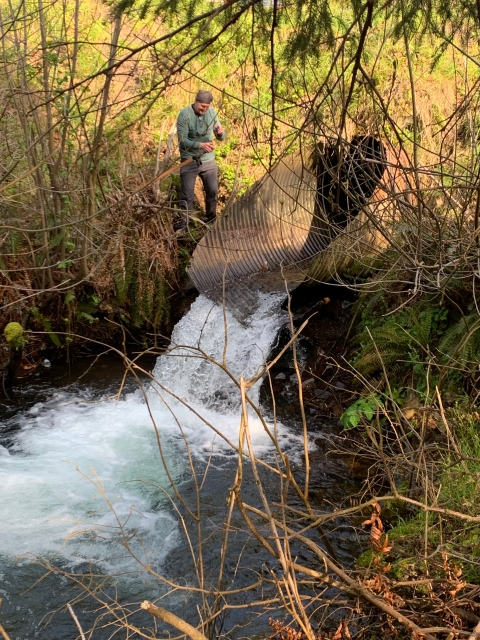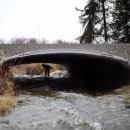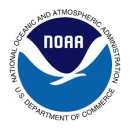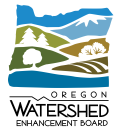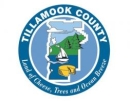States
OregonThe Myrtle Creek fish passage fish passage
Fish passage is the ability of fish or other aquatic species to move freely throughout their life to find food, reproduce, and complete their natural migration cycles. Millions of barriers to fish passage across the country are fragmenting habitat and leading to species declines. The U.S. Fish and Wildlife Service's National Fish Passage Program is working to reconnect watersheds to benefit both wildlife and people.
Learn more about fish passage restoration project is located on Kilchis River Road in Tillamook County. This project will focus on removing a 5’ perched undersized fish passage barrier culvert on Myrtle Creek, a tributary to the Kilchis River in the Tillamook Bay Watershed. The project will reopen 1 mile of high priority spawning and rearing habitat above the recently restored 70-acre portion of Kilchis Estuary. The increased rearing and smoltification habitat provided by this restoration project, magnify the benefits of any spawning and freshwater rearing habitat opened up by passage projects such as this one. Myrtle Creek Restoration serves as excellent example of the Salmon SuperHwy partnership bringing together expertise, funds and other resources to improve habitat for fish and make local infrastructure safer and more resilient to a changing climate.
Quick Facts:
| Project Status | In Development |
| Location | OR, Tillamook |
| NFPP Project Funding | $500,000 |
| Restoration Techniques | Culvert Removal |
| Accomplishments | 1 Stream Mile Reopened |
| Project Partner Lead | Trout Unlimited |
| Primary Species Benefited | Coho Salmon |
The National Fish Passage Program combines technical expertise with a track record of success.
Implemented primarily through the Service's Fish and Wildlife Conservation Offices, the National Fish Passage Program provides financial and technical assistance to partners across the country. Since 1999, the program has worked with over 2,000 local communities, Tribes, and private landowners to remove or bypass over 3,400 barriers to fish passage and reopen access to over 61,000 miles of upstream habitat for fish and other animals. Staff have expertise in fish migration and biology as well as financial, engineering, and planning assistance to communities, Tribes, and landowners to help them remove barriers and restore rivers for the benefit both fish and people.
Fish passage project proposals can be initiated by any individual, organization, government, or agency. However, proposals must be submitted and completed in cooperation with a Fish and Wildlife Conservation Office. (Please note that fish passage projects being used for federal or state compensatory mitigation or required by existing federal or state regulatory programs are not eligible for funding through the National Fish Passage Program.)
CONTACT A FISH PASSAGE COORDINATOR IN YOUR AREA TO GET STARTED.

